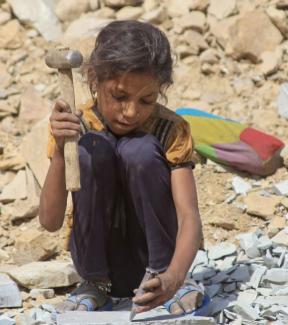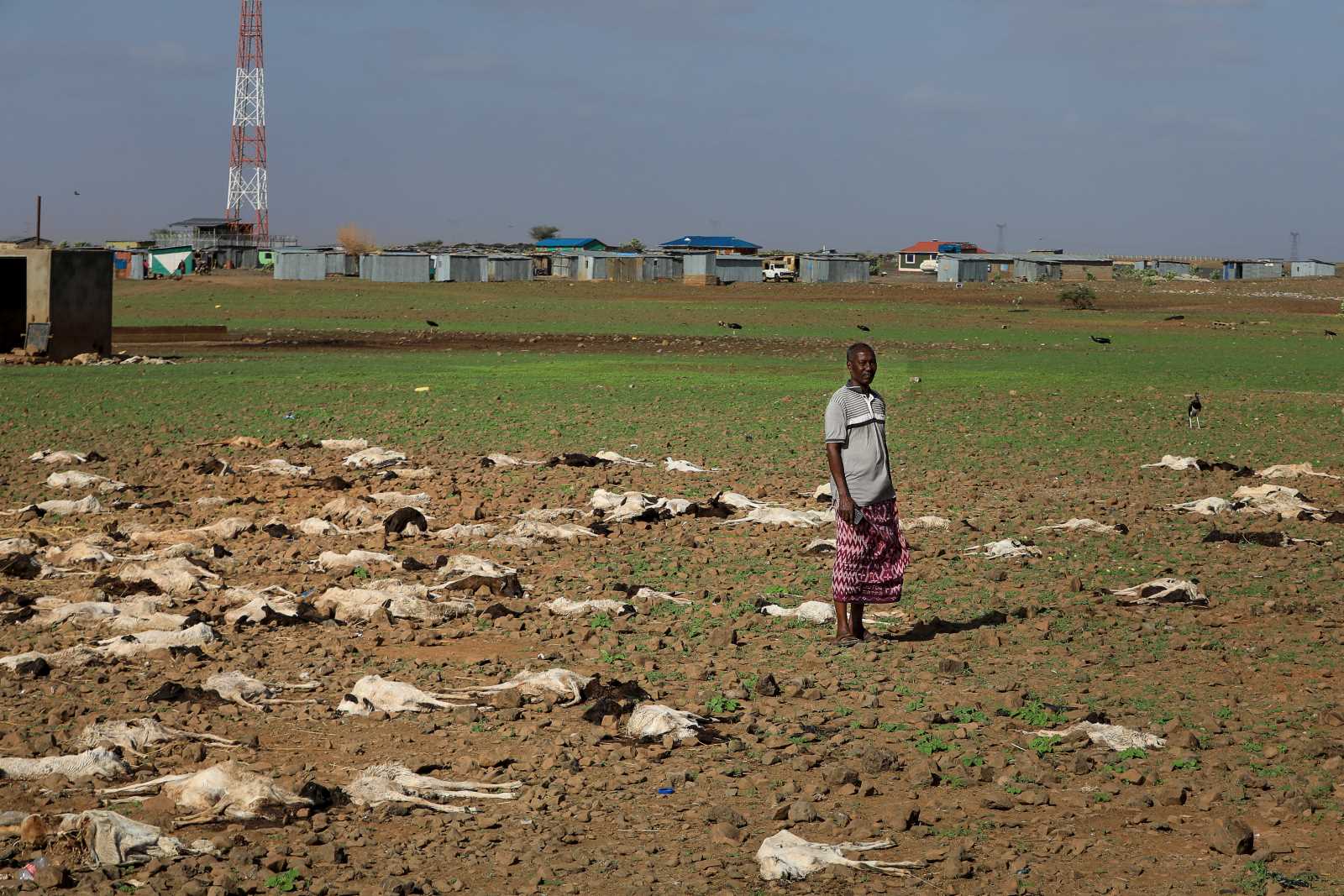Child labour
Childhood in a quarry

Worldwide, more than 150 million children between the ages of five and 17 are forced to work, many in hazardous places such as quarries. Political scientist Walter Eberlei has edited a revealing book on such abuse, which the UN classes as one of the worst forms of child labour.
The contributors highlight the fact that rich countries benefit from children working illegally for a pittance in quarries. In 2016, Germany alone imported nearly 20,000 tonnes of natural stone from China, India and Vietnam destined for use as paving stones, gravestones, kitchen worktops and garden design elements. Roughly a third of all German tombstones are estimated to come from India, where children make up around eight to ten percent of the workforce in the quarrying and mining sector. About a million children are believed to be involved.
Some kids start working as early as the age of five. They assist blasting crews, haul heavy loads or cut and polish rock. They use dangerous equipment and chemicals. They risk abrasions, broken bones and deformities as well as accidents that result in death or disability. Moreover, many suffer pulmonary diseases such as asthma or silicosis.
Most of the child labourers either skip school or have dropped out of education entirely. They have virtually no chance of escaping lifelong poverty. Their earnings may be meagre, but their families depend on their income to make ends meet. Their parents are underpaid and lack any social protection. Many cannot repay loans, and since children often inherit parents’ debts, entire families are stuck in debt bondage for generations.
According to the book, India’s deeply entrenched caste system is relevant too. The stone-cutter caste Vaddera is very low in the social hierarchy, and its members basically see no point in educating their children. They do not consider upward mobility to be possible.
The book also casts a spotlight on China, the world’s largest producer of natural stone and leading exporter of semi-finished and finished products to the US and Europe. Despite the limited data available, the report concludes that the low prices of Chinese stone suggest precarious working conditions and child labour. While child labour is something of a taboo subject in China, hard labour – in quarries and elsewhere – is regarded as acceptable punishment for young offenders. Moreover, schools sometimes improve their own finances by arranging for students to perform hard manual labour.
The book’s message is sobering. While Brazil has made progress in the fight against the worst forms of child labour, countries such as India, China and Vietnam have failed to tap their potential in full. This is so in spite of their legislation that was designed to protect children. The book spells out the following reasons for the wide gap between legal aspirations and grassroots reality:
- lack of political will,
- widespread corruption,
- poor law enforcement and
- government agencies limiting the scope of investigative journalism.
Prohibiting and eliminating the worst forms of child labour is one of the most important goals of the 2030 Agenda for Sustainable Development (Sustainable Development Goals – SDGs). A great deal still needs to be done to achieve it. First of all, the countries where child labour has been identified must shore up their act. They must consistently enforce the law, ensure fair wages for adult workers and establish effective social-protection systems. At the same time, stone importers like Germany should do their part, by following strict guidelines in public procurement, for example, or operating a transparent certification system.
Book
Eberlei, W. (ed.), 2018: Grabsteine aus Kinderhand. (“Tombstones made by children” – in German). Frankfurt, Brandes & Apsel.
Dagmar Wolf is the editorial assistant at D+C Development and Cooperation / E+Z Entwicklung und Zusammenarbeit.
euz.editor@dandc.eu













